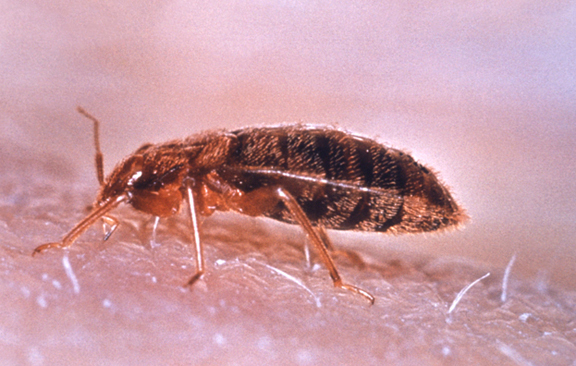They want to suck your blood
Bedbugs make a comeback in our area
“The Twilight Saga” and “True Blood” vampires aren’t the only bloodsuckers making a comeback lately. These culprits are much smaller, and instead of fangs, they have special two-tube mouth parts that can pierce your skin and allow them to feast on your blood. Bedbugs — also known as Cimex lectularius — are found throughout the world and are significantly increasing in numbers in the New York area and other parts of North America.
“It’s bad and going to get a lot worse,” said Jim Skinner, president of A&C Pest Management in East Meadow. “We’re getting a lot more calls.”
The Centers for Disease Control hasn’t announced that bedbugs carry diseases “because they are the disease,” Skinner said. The feeling of itching, scratching, not sleeping or being afraid to sleep can take its toll on a human host. “It’s a psychological pest,” he said.
Joe Kennedy, vice president of Arrow Exterminating, headquartered in Lynbrook, said that the business get gets two to three calls a day about bedbugs — and in about 10 percent of the visits, the bugs are actually found. “You can see them, you can look for blood stains, or castings [their outer skins],” Kennedy said.
Bedbugs are small, he explained, about one-fifth of an inch, but can be seen with the naked eye. After feeding, they appear red, and undigested blood can be seen on bed sheets or other surfaces. Contrary to their name, they can be found anywhere there is a crack or crevice — including furniture — but they prefer warm areas.
They are nocturnal, and usually feed on sleeping hosts. Their saliva is what causes the swelling and itching. But because mites, mosquitoes, fleas and lice also bite, a bedbug specimen must be collected and identified by an expert.
In some cases, the bites can develop into painful welts that last several days. Some people may respond less to the bites over time, while others’ reactions may worsen. This makes it difficult to identify the exact date when bedbugs first appear, since bites are usually the first clue that they are present.
History of a bloodsucker

 50.0°,
Overcast
50.0°,
Overcast 







